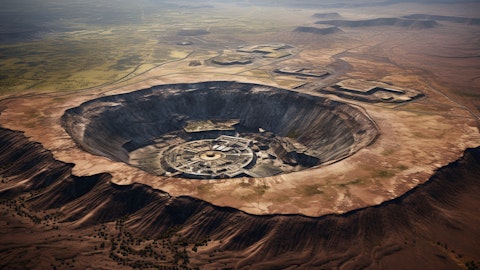The world is home to several nations with rich and diverse populations; among them, there are countries where most of the population identifies as Black. These nations have vibrant cultures, histories, and traditions that reflect the incredible diversity and resilience of Black communities around the globe. In this exploration, we will delve into the 30 most populated Black countries in the world, highlighting their unique characteristics and contributions to the global tapestry of human civilization.
African Countries with Large Black Populations
Africa is home to a large population of Black people, and there are many opportunities for business and investment in the continent. African Americans are financially able to start businesses in Africa, including in countries such as Kenya, Nigeria, South Africa, and Ghana. In 2018, businesses owned by African Americans grew more than 400 percent, and interest in supporting Black-owned companies has soared. If Black business owners invested in Africa, they could benefit from various programs, gain profits, and help Africa’s entrepreneurs.
The Caribbean is the largest origin source of Black immigrants, but the fastest growth is among African immigrants. Between 2000 and 2019, the Black African immigrant population in the US grew by 246%, from roughly 600,000 to 2.0 million. The top 10 countries of origin accounted for 69% of the foreign-born Black population in 2000 and 66% in 2019, and all of these countries are in Africa or the Caribbean. Nigeria and Ethiopia were the top birthplaces for Black immigrants in 2019.
Africa is a 1.2 billion-person market on the cusp of transformative growth, and it already has more big companies than one would imagine. Nearly 90 percent of African-based companies and 58 percent of those based in other regions expect their revenues in Africa to grow over the next five years, and most plan to expand their African footprint to additional countries. McKinsey’s database of large companies with business in Africa reveals surprising figures: 400 companies earning $1 billion or more and nearly 700 companies with revenue exceeding $500 million.
Approximately 2.1 million sub-Saharan African immigrants resided in the United States in 2019, representing 5 percent of the total foreign-born population. While most of the 4.6 million Black immigrants in the United States are from the Caribbean, people from sub-Saharan Africa represent a growing share. The U.S. Census Bureau projects that the total foreign-born Black population will double by 2060 to 9.5 million.
In terms of diaspora connections, according to 2014 estimates, more than 3,000 African Americans and people of Caribbean descent live in Ghana, a country of about 26 million people. Ghana has become the destination for diasporans seeking a spiritual home and an ancestral connection in Africa.
Furthermore, there is a growing trend of significant corporate interest in Africa. US companies have collectively invested a substantial $48 billion in the continent, as reported by the Borgen Project. Among these corporations, some notable US players focusing on the African market are Alphabet Inc. (NASDAQ:GOOG), Ford Motor Company (NYSE:F), and Cummins Inc. (NYSE:CMI).
Alphabet Inc. (NASDAQ:GOOG), operating under the banner of ‘Google Africa,’ has embarked on various initiatives in the African landscape. These initiatives encompass the expansion of Alphabet’s own network, the deployment of Google Fiber, and substantial investments in renewable energy projects across the continent.
Cummins Inc. (NYSE:CMI) is expanding its footprint in Africa, establishing local branches in several African countries. A key aspect of Cummins’ approach is its commitment to sharing profits with the local community, contributing to economic and social development in its regions.
Ford Motor Company (NYSE:F) is also deeply engaged in Africa, collaborating with organizations such as World Vision in Africa and Riders for Health. Through these partnerships, Ford actively works to enhance access to quality education and healthcare across the continent. Additionally, Ford made a significant move in 2017 by opening a production plant in Nigeria, strengthening its commitment to the African market.
Furthermore, it’s worth noting that Chinese companies have increasingly directed their investments towards West Africa in recent years, indicating a shift away from the traditional North African markets. This shift underscores the evolving investment dynamics in Africa, presenting new opportunities and challenges for businesses and economies.
Demographics of Black Populations
The demographics of the Black population in the US are diverse, with varied histories and nuanced ethnic and racial identities reflecting intermarriage and international migration. In 2021, an estimated 47.2 million people self-identified as Black, making up 14.2% of the country’s population. The Black population is growing, projected to reach 74.5 million by 2060. The Black population is concentrated in the South, with the most significant numbers in Texas, Florida, and Georgia.
The median age of the Black population is 34, which is younger than the median age of the US population. However, the poverty rate among Black people is higher than the national average, and they are more likely to live in poverty than other racial and ethnic groups. In addition, Black people are underrepresented in leadership positions in large companies, with only 3.2% of senior leadership roles and 0.8% of all Fortune 500 CEO positions held by Black people.
In terms of Black-owned businesses, the number of Black small-business owners was 28% higher in the third quarter of 2021 than pre-pandemic, compared to 19% for Latino business owners and 5% for white and Asian business owners. However, despite this growth, Black people only comprise approximately 14% of the US population but only 2.3% of owners of employer firms. The nation has 3.12 million Black-owned businesses, generating $206 billion in annual revenue and supporting 3.56 million US jobs.
To support Black-owned businesses, companies must create a diversity hiring strategy specifically for Black employees, introduce bias training for managers, implement clear, consistent promotion standards, and hire decision-makers committed to diversity. The growth of Black-owned businesses is essential for the prosperity of Black communities.
Our Methodology
For our methodology, we have ranked the most populated black countries in the world based on their total population in 2023.
Here is our list for the 30 Most Populated Black Countries in the World.
30. United Kingdom
Total Black Population: 2 million
29. Jamaica
Total Black Population: 3 million
28. Peru
Total Black Population: 3 million
27. Saudi Arabia
Total Black Population: 4 million
26. Yemen
Total Black Population: 4 million
25. Algeria
Total Black Population: 5 million
24. Colombia
Total Black Population: 6 million
23. France
Total Black Population: 8 million
Total Black Population: 11 million
21. Morocco
Total Black Population: 12 million
20. Burkina Faso
Total Black Population: 23 million
Burkina Faso, with over 20 million people, is a market opportunity in West Africa, particularly for mining-related sectors, as it’s the fourth-largest gold producer in Africa. It ranks 151st in the 2020 World Bank “Doing Business” report, with a 27.5% corporate income tax rate. In 2021, the country had a GDP of $ 19.7 billion and a GDP per capita of $893. Key exports are gold, cotton, and livestock, with major trading partners including China, India, and Singapore. The black population significantly contributes to Burkina Faso’s economy.
19. Mali
Total Black Population: 23 million
Mali is a low-income country with a black population of 23,293,698, relying on priority growth sectors such as agriculture, mining, tourism, energy, and transport infrastructure. Business associations like CCIM, AFEM, and AJEM play a significant role in economic governance. Regarding ease of doing business, Mali ranks 148 out of 190 countries. The country’s GDP per capita was $873.79 in 2021.
18. Niger
Total Black Population: 27 million
Niger is one of the most populated black countries in the world and relies heavily on agriculture, with extreme poverty expected to reach 44.1% in 2023. Positive aspects include a rebound in GDP growth of 7.2%, abundant uranium deposits, and a fast-growing population that could drive growth if managed effectively. In 2023, Niger’s GDP (PPP) is $32.9 billion, with a per capita income of $1,310.
17. Cameroon
Total Black Population: 29 million
Cameroon is a highly populated black country with valuable resources, diverse ethnic groups, and a youthful population. The thriving sectors include telecommunications, manufacturing, and technology, positioning it for the Fourth Industrial Revolution. The country offers various forms of business through OHADA law. Bilingualism, a bustling hub in Douala, and contributions from the black population in sectors like telecommunications, oil and gas, and financial services favor the economy.
16. Cote Divore
Total Black Population: 29 million
Cote d’Ivoire, a highly populated black country, relies on agriculture and is the world’s largest cocoa producer. Despite this, low yields and educational challenges persist. The government has made progress since the 2011 post-electoral crisis but faces issues like revitalizing agriculture and addressing youth unemployment, with a 25% unemployment rate.
15. Madagascar
Total Black Population: 30 million
Madagascar, a highly populated Sub-Saharan African country, faces investment challenges due to political instability, corruption, and COVID-19 restrictions. It boasts valuable mineral resources and a notable manufacturing sector. Starting a business is time-consuming and costly, with the US being a primary export market, although exports fell by 17% to $439.3 million in 2020. European practices influence business customs, and Madagascar offers business potential in tutoring, digital marketing, content writing, and travel agencies.
14. Mozambique
Total Black Population: 34 million
Mozambique, one of the most populated black country in southeastern Africa with about 33.8 million people, possesses abundant natural resources, including natural gas deposits and strategic seaports. While it experienced impressive economic growth since the end of its civil war in 1992, recent developments suggest a slowdown in its financial performance. The country benefits from a youthful and growing population, but approximately a third still lives on less than US$1 daily.
13. Ghana
Total Black Population: 34 million
Ghana is the third largest U.S. export market in Sub-Saharan Africa. In 2020, it imported $12 billion in services and exported $9 billion. As of 2022, 39.2% of the population has a financial institution account. Public debt reached 93.5% of GDP in 2022. The capital adequacy ratio of the financial sector is declining. Over 18,000 new businesses were registered in 2022, primarily sole proprietors. However, investor confidence could be higher due to challenges like high government debt, soft revenue mobilization, corruption, and inefficient state-owned enterprises.
12. Angola
Total Black Population: 37 million
Angola is a lower-middle-income country in southern Africa, with a total population of 37 million in 2023. Its GDP was $67.4 billion in 2021, making it the sixth-largest economy in sub-Saharan Africa. Angola is the largest oil producer in sub-Saharan Africa and relies heavily on mineral product exports.
11. United States
Total Black Population: 47 million
10. South Africa
Total Black Population: 48 million
South Africa is Africa’s most advanced and diversified economy, with over 60 million people. It boasts a robust digital landscape, offering market opportunities. It’s a logical entry point for U.S. companies in Sub-Saharan Africa, excelling in various business sectors. Notably, South Africa is the world’s top producer of platinum, vanadium, chromium, and manganese.
9. Sudan
Total Black Population: 48 million
Highly populated Sudan relies on agriculture for 40% of its GDP. Its economy is rich in resources, including oil and minerals, with a GDP of $34.3 billion in 2021. Urbanization in Sudan is growing at 34.5%, offering business opportunities. However, Sudan has a high poverty rate, with 32% living below the poverty line. The country is open to foreign investment, especially in oil and mining, with agreements in place.
8. Uganda
Total Black Population: 49 million
Uganda, a highly populated black country, experienced 6.3% GDP growth in 2022 and aims for sustained growth above 6%. Initially, at 7.2%, inflation was curbed by the Bank of Uganda, falling below 5% in June 2023. Uganda ranks 169th out of 190 countries in ease of business but is improving in various areas. The country offers investment opportunities in agriculture, renewable energy, and a significant oil reserve.
7. Kenya
Total Black Population: 55 million
Kenya is Sub-Saharan Africa’s fourth-largest economy, with sustained growth above 5%, outperforming the region for eight years. It boasts the largest middle class in East Africa (44.9% of the population). Kenya’s society and economy have undergone fundamental changes, but it holds potential for further growth and development, with a predicted 80% increase in millionaires over the next decade.
6. Tanzania
Total Black Population: 67 million
Tanzania is one of Africa’s fastest-growing economies, with a 4.6% GDP growth rate in 2022, expected to reach 5.1% in 2023. With a high dependency rate, Tanzania’s population has grown by 37% in the past decade. The country’s diverse natural resources and youthful population offer opportunities for foreign investment and economic growth.
5. DR Congo
Total Black Population: 102 million
The Democratic Republic of Congo (DRC) is the largest African country with a vibrant economy centered on commodities, including copper, cobalt, tin, tungsten, and tantalum, with untapped mineral deposits valued at $24 trillion. The United States exported $1.37 billion in goods to the DRC in 2020, primarily Documents of Title, poultry meat, and magnesium carbonate. Real GDP in the DRC grew by 8.5% in 2022, primarily due to a 20.8% growth in the extractive sector.
4. Brazil
Total Black Population: 103 million




